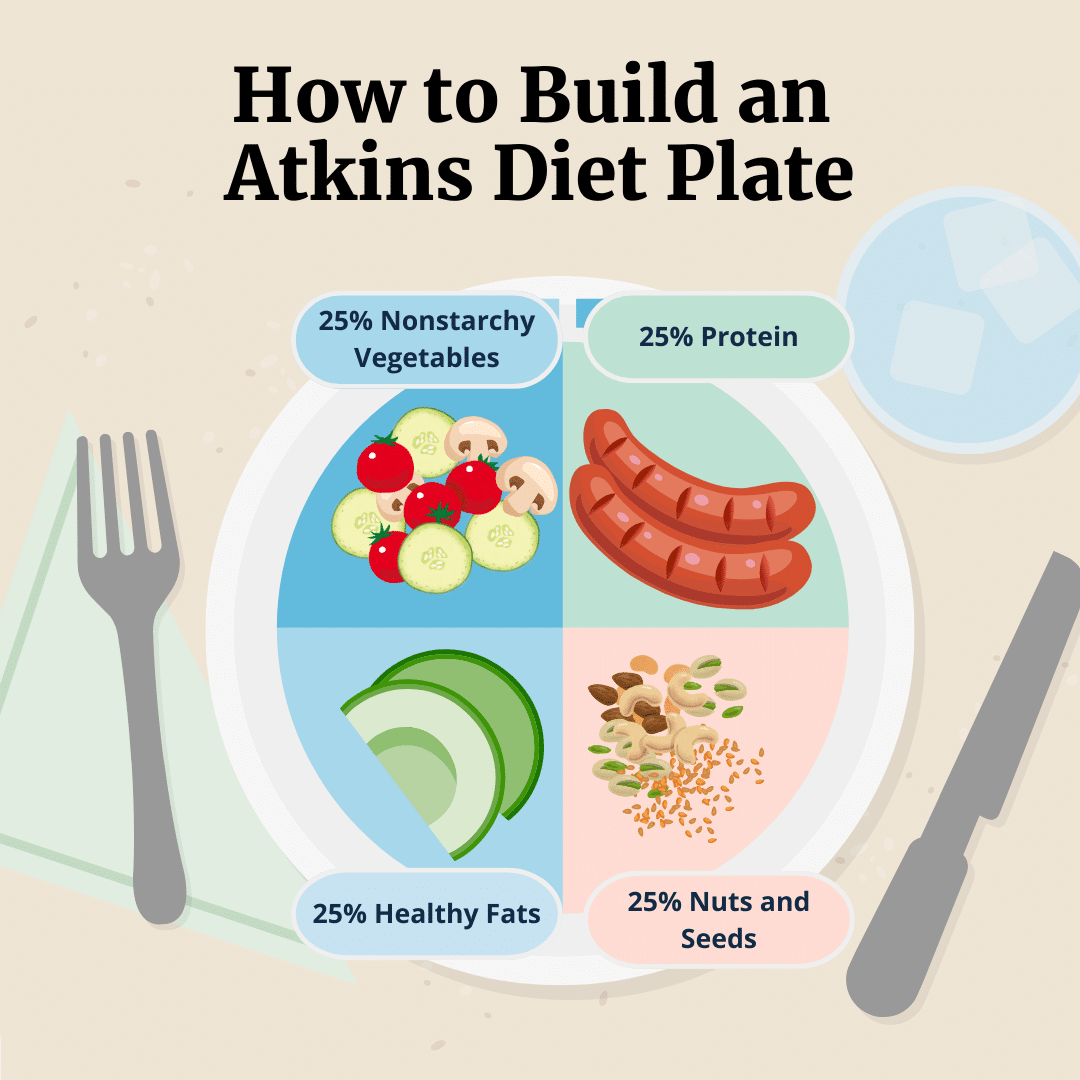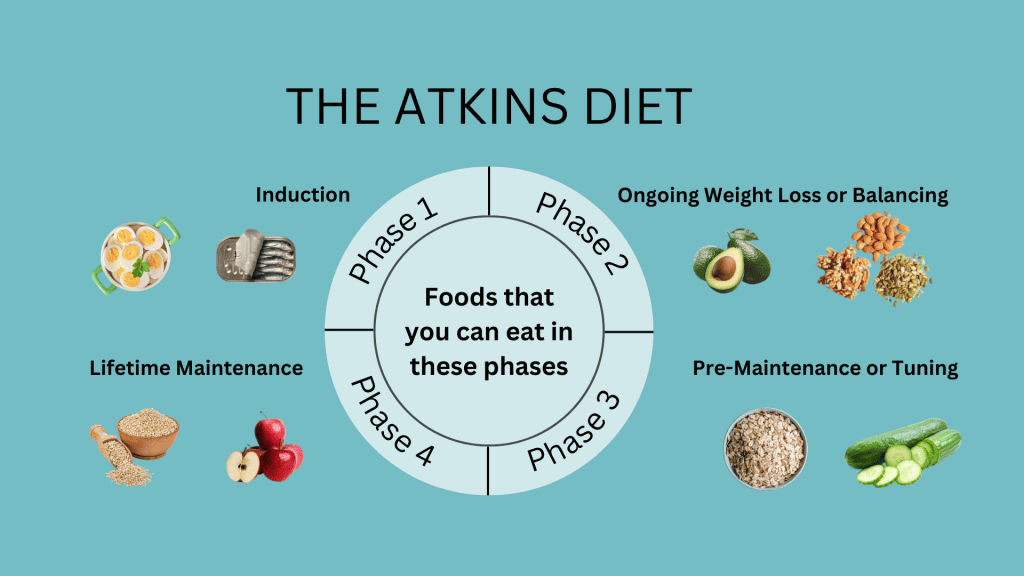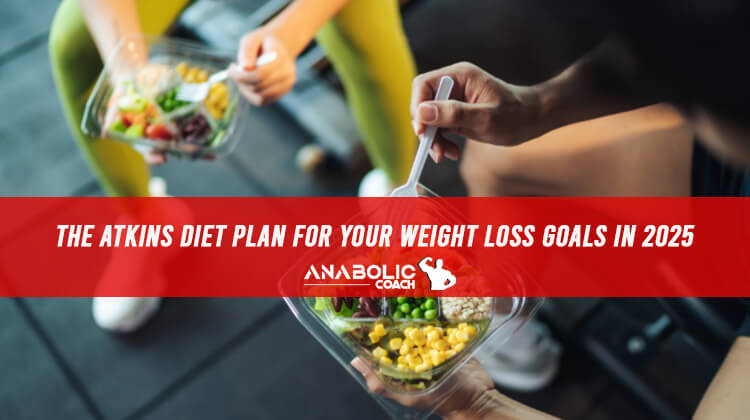Our mailbox has been flooded with enquiries about different dietary plans for healthy living in general and weight loss in particular. And after sifting through the mails, we discovered a number of inquiries about one nutrition plan in particular and this is the Atkin dietary plan.
The Atkin diet plan has invoked a lot of interest in recent times with many people wondering if they can trust the plan for their weight loss and/or cutting goals in 2025.
In order to put your minds at ease, we decided to take a closer look at the Atkin diet and give you our honest opinion of what we think about you adopting this nutrition plan during your cutting phase.
This article is dedicated to everyone that has sent us an email requesting for our opinion on this dietary plan.
We begin with a brief overview of Atkins diet plan looking at its origins, what it is, and how it works.
The Origins, Principles and Workings of The Atkins Diet Plan
The origins of the Atkins
diet plan began in the U.S as way back as 1963 when a well respected medical researcher known as Dr. Richard Atkins went on a quest to discover a nutrition plan that will give significant weight loss outcomes without participants having to battle with hunger urges during the course of their cutting program.
During his research, Dr. Atkins discovered the benefits of a low-carb diet on himself and to ensure that his observation was not a one-off, he had a total of 65 executives involved in his low-carb diet experiment and like clockwork, all the executives experienced significant weight loss just as he did when he first put his theory of a low-carbohydrate diet for weight loss to the test.
The success of Dr. Atkins research led to the publishing of his first book in 1972 titled “Dr. Atkins’ Diet Revolution.”
The book explains how a low-carb diet can be beneficial to a person’s overall health including how such a diet can help with weight loss.
Typically, the Atkins diet plan encourages carbohydrate restriction and emphatically promotes the consumption of foods rich in healthy fats and protein for improved general health and weight loss.
You might be wondering how consuming foods low in carbohydrate, but high in fats and protein can lead to weight loss. Well, according to the principles of the Atkin diet, carbohydrates provide the body with its main source of energy fuel and whenever you eat less carbohydrates, you force the body to seek alternative sources of energy fuel.
The body then switches to burning body fat rather than carbs for energy fuel in a metabolic process known as “ketosis” and the result of this process is weight loss.

What You Should Know about the The Atkins Diet Phases
According to the Atkins diet plan there are four main phases that anyone wishing to start this low-carb weight loss nutrition program should be aware of.
The four Atkins diet phases are :
#1. Phase I – The Induction Phase
The Induction Phase is scheduled for just 14 days or two weeks. At this phase, your daily carbohydrates consumption should be limited to just 20 grams. You should eat more healthy fats and proteins from a variety of food sources. Do not leave out veggies from your meals.
#2. Phase II – Ongoing Weight Loss (OWL) Phase
In this Atkins diet phase that starts on the third week of this diet plan, you will start to witness weight loss. At this point, you should rev-up your consumption of carbohydrates with a daily consumption of 50 grams daily.
You should also try to consume a lot of fruits and veggies at this point along with omega-3, multimineral, and multivitamin supplements. Note that you should not leave phase two of this diet until you are about 10 pounds away from attaining your target body weight.
#3. Phase III – The Pre-Maintenance Phase
The third phase of the Atkins diet begins at the point where you are about 10 pounds away from your targeted weight. It is at this phase that you work towards maintaining your desired body weight for the long haul.
At this phase, you should add 10 grams of carbs to your daily meals in order to find your carb tolerance level. You should consume complex carbs provided by food sources like fruits, starchy veggies and whole grains.
While you should not overeat, you should feast until your appetite is satiated. Note that you should continue this phase until you attain your preferred body weight.
#4. Phase IV – The Maintenance Phase
Once you reach your preferred body weight, you then enter the fourth Atkin diet phase known as the maintenance phase. At this phase, you need to do what is necessary to maintain your desired body weight including adopting a training and diet lifestyle that may stay with you for a lifetime.
You need to avoid refined and processed foods while maintaining a diet rich in protein and healthy fats from an array of unprocessed food sources.

Atkins Diet Foods to Add to Your Meals and Consume
It is important for you to know those Atkins diet foods you should consume as well as those food sources you really should avoid while on this dietary plan.
Here’s a summary of Atkin diet foods you should eat.
Protein
For your proteins go for protein-rich food sources like eggs, fish, dairy products, poultry and meat.
Healthy Fats
Consume healthy fats from sources like nuts, olive oil and avocado.
Vegetables
Consume a lot of vegetables like asparagus, cauliflower, broccoli, and leafy greens.
Fruits
Make sure your meals include a variety of fruits. You can consume fruits like apples, citrus fruits, and berries.
Just as you have viable food sources to consider, you should also know those foods to avoid while you are on an Atkins diet plan.
You should avoid consuming sugary foods like cakes, candy and cookies. You should also avoid consuming refined carbs like sugary beverages, pasta, and white bread.
Also, leave out legumes like lentils, and beans from your meals and steer clear of high-carb veggies like peas, corn, and potatoes.
Low-Carb Diet Benefits and Risks to Consider
As already indicated, the main benefit of this low-carb diet is weight loss, but there are also other key benefits that you can gain from an Atkins diet plan.
The main low-carb diet benefits and risks include :
Blood Sugar Management
The Atkins diet can help you to manage your blood sugar level and therefore this dietary plan is great for preventing the onset of diabetes as well as managing diabetes itself. In addition to this, Atkins diet helps in reducing triglycerides levels.
Boost In Energy Levels
With healthy fats and a protein-rich diet, you will be able to give your body the energy fuel needed to engage in and maintain high-intensity interval training (HIIT), cardio workouts, and strength training programs.
As mentioned earlier, a low carb diet leaves your body relying on body fat for energy fuel through the process of ketosis. By consuming meals high in protein and healthy fats, you equip your body with a viable energy source and reserve.
When it comes to the risks and drawbacks of an Atkins diet plan, there are a few worth noting and these include; possible constipation concerns as a low fiber diet can increase your risk of experiencing constipation, a deficiency in your micronutrient intake, bad breath caused by the increase in acetone production due to the breakdown of more fat for energy fuel, and social concerns as you may need to skip certain outings and occasions in order to avoid consuming those foods that are not allowed when you are running an Atkins dietary plan.
Conclusion
In conclusion, there are a few tips that you should take to heart if you want to be successful in your Atkins diet plan. The first thing you need to consider is hydration, you need to keep yourself hydrated at all times, as water actually helps in preventing constipation and also in aiding with your desired weight loss goal.
You should also maintain a certain number of meals per day. You can consume three primary meals with two secondary meals or snacks daily. This way you will keep your energy levels up throughout the day.
Avoid unprocessed and refined foods and stick with satisfactory portions of whole foods and do not overeat.
Finally, you should consult a medical expert, nutritionist and/or dietician before you start an Atkin diet plan. This way you will ensure that you are medically clear to proceed with a low-carb diet for weight loss.
It is worth mentioning that the Atkins diet plan is not just backed by anecdotal claims, but by the scientific community with more than 100 publications proving that the dietary plan is effective for weight loss and general healthcare.
Even the American Heart Association and Harvard Medical School have weighed in on the validity of the dietary plan.
So on our part, we say YES to anyone looking to run this nutrition plan for their weight loss and general wellbeing objectives. You can learn more about the Atkins diet plan by chatting with an expert here today.
Frequently Asked Questions (FAQs) About Atkins Diet Plan
Can anyone run an Atkins diet plan?
No. You should steer clear of the Atkins diet diet if you suffer from an underlying medical condition that could be exacerbated by this dietary plan. Also, pregnant women and breastfeeding mothers should avoid this diet plan.
Is it safe to consume high levels of protein while on an Atkins diet plan?
While eating protein is essential to this diet plan, you should avoid consuming too much protein, as this could put a tremendous amount of stress on your liver and kidneys during metabolism.
Will I get to experience weight loss as soon as I start the Atkins diet?
No. You should not expect weight loss results until about 14 days or two weeks into your diet. Also, note that weight loss results may vary from person to person due to a myriad of factors including genetics and the intensity of training.


